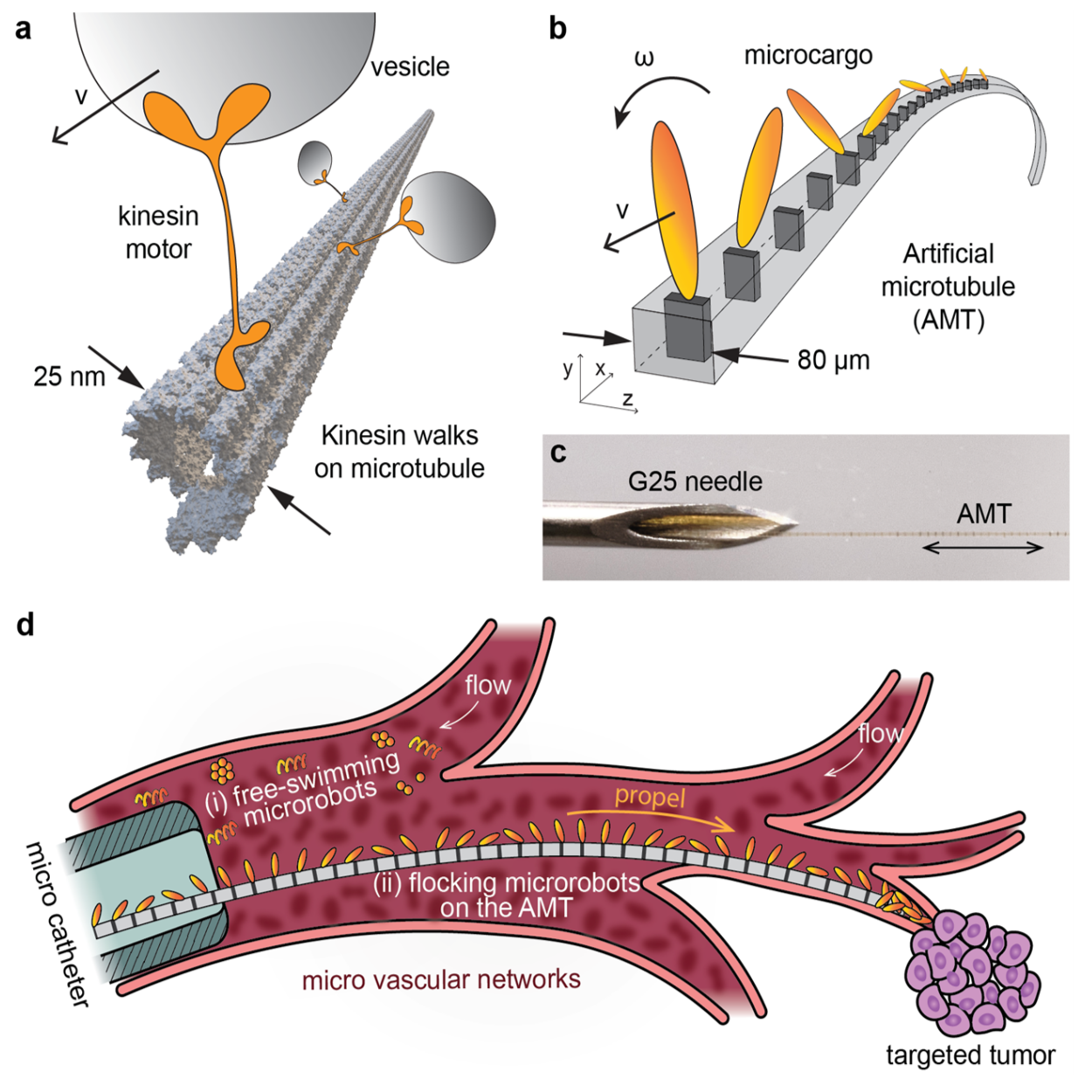Artificial Microtubules for Rapid and Collective Transport of Magnetic Microcargoes

Abstract
Directed transport of microcargoes is essential for living organisms as well as for applications in microrobotics, nanotechnology, and biomedicine. Existing delivery technologies often suffer from low speeds, limited navigation control, and dispersal by cardiovascular flows. In cell biology, these issues are largely overcome by cytoskeletal motors that carry vesicles along microtubule highways. Thus inspired, we developed an artificial microtubule, a structured microfiber with embedded micromagnets that serve as stepping stones to guide particles rapidly through flow networks. Compared to established techniques, the microcargo travels an order of magnitude faster using the same driving frequency, and dispersal is mitigated by a strong dynamic anchoring effect. Even against strong fluid flows, the large local magnetic field gradients enable both anchoring and guided propulsion. Finally, we show that AMTs can facilitate the self-assembly of microparticles into active matter clusters, which then enhance their walking speed by bridging over stepping stones collectively. Hence, we demonstrate a unique strategy for robust delivery inside microvascular networks and for minimally invasive interventions, with non-equilibrium effects that could be equally relevant for enhancing biological transport processes.
Media coverage
The paper has been covered by Techzle, PhysOrg, Scienmag, Bild der Wissenshaft, Bioengineer, and Nano Werk.